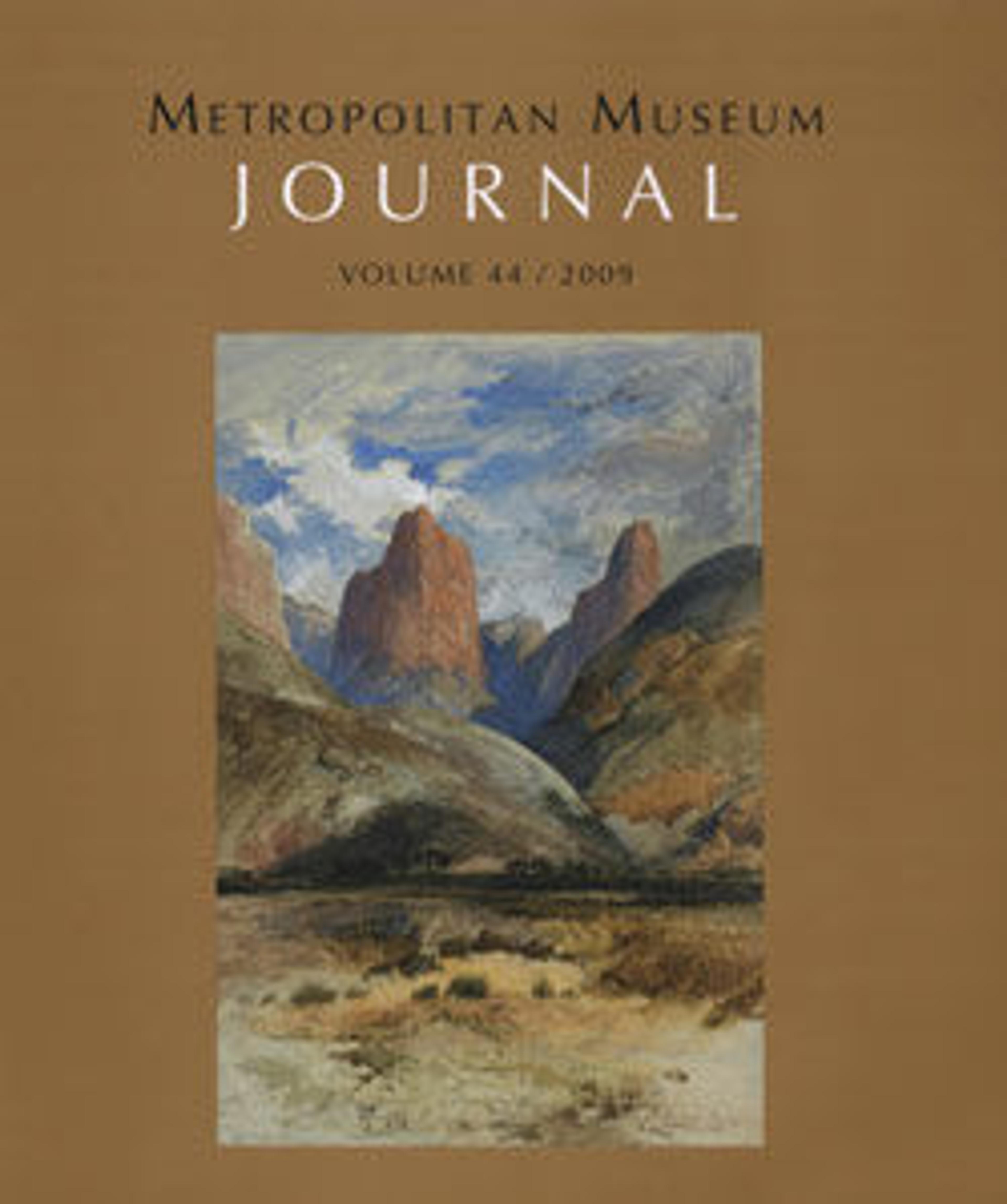Two marble pilasters
Decorated on three sides with ivy vines in low relief, these twin pillars exemplify the lavish use of colored marble and elaborate carving in Roman architecture. Branches of young ivy and clusters of berries issue from the central stalk that rises vertically from an ornate calyx krater at the base. Birds, insects, and reptiles inhabit the trailing lush foliage, all carved in a vivid, naturalistic manner that evokes a garden in springtime. The pillars are made of cipollino verde (also known as marmor carystium), a precious striated greenish marble desired for its polychromy. Exotic colored marbles conveyed elevated status and were reserved for imperial and prestigious public buildings. The high-quality craftsmanship of the relief also suggests an imperial commission. The pillars probably come from emperor Hadrian’s villa at Tivoli, outside Rome, where similar pillars supported garden buildings. Reused at a later period as doorjambs, they were placed upside-down, as the position of the iron hinges presently shows.
Artwork Details
- Title:Two marble pilasters
- Period:Mid Imperial, Hadrianic
- Date:ca. 117–138 CE
- Culture:Roman
- Medium:Marble
- Dimensions:Overall: 108 x 12 x 13 in. (274.3 x 30.5 x 33 cm)
- Classification:Stone Sculpture
- Credit Line:Rogers Fund, 1919
- Object Number:19.192.34a, b
- Curatorial Department: Greek and Roman Art
More Artwork
Research Resources
The Met provides unparalleled resources for research and welcomes an international community of students and scholars. The Met's Open Access API is where creators and researchers can connect to the The Met collection. Open Access data and public domain images are available for unrestricted commercial and noncommercial use without permission or fee.
To request images under copyright and other restrictions, please use this Image Request form.
Feedback
We continue to research and examine historical and cultural context for objects in The Met collection. If you have comments or questions about this object record, please contact us using the form below. The Museum looks forward to receiving your comments.
